How to create an assignment
You can create an assignment inside a course with the help of the following steps:1
Open the course builder
Go to the Instructor Dashboard and select Courses from the sidebar.
Choose the course where you want to add an assignment, then click Open Course Builder.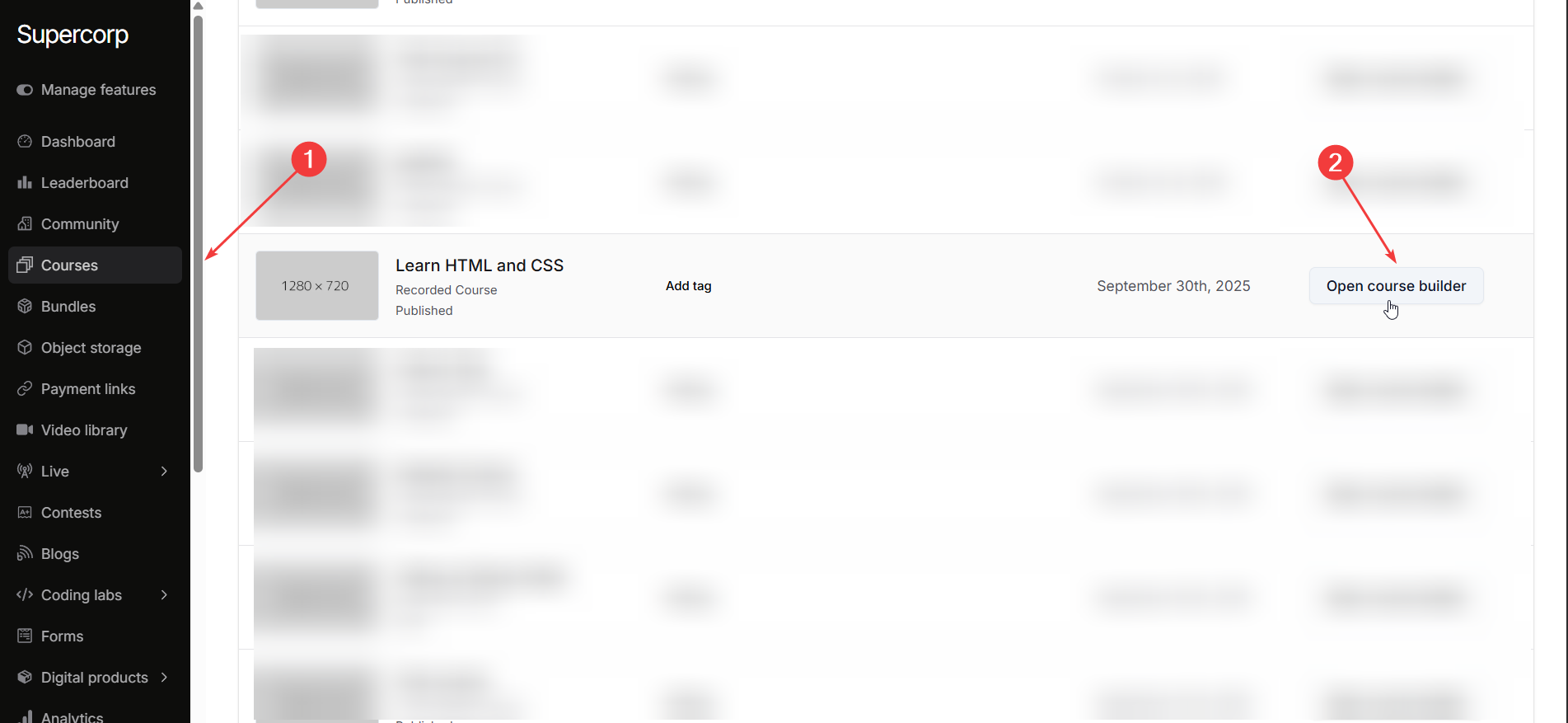
Choose the course where you want to add an assignment, then click Open Course Builder.

2
Add assignment section
Navigate to the Syllabus tab.
Find the section where you want to add the assignment and click Add in this section.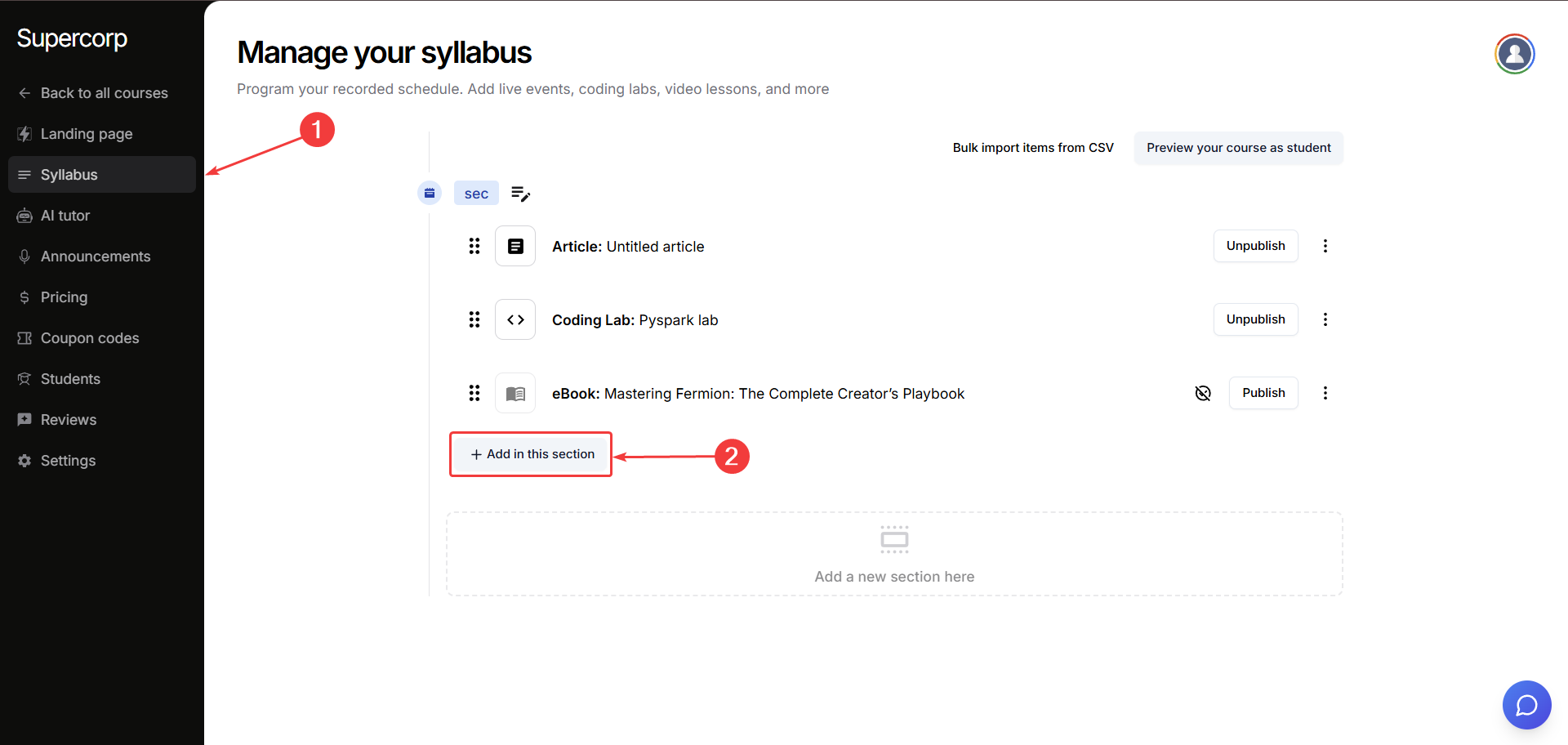
From the list of available content types, select Upload assignment.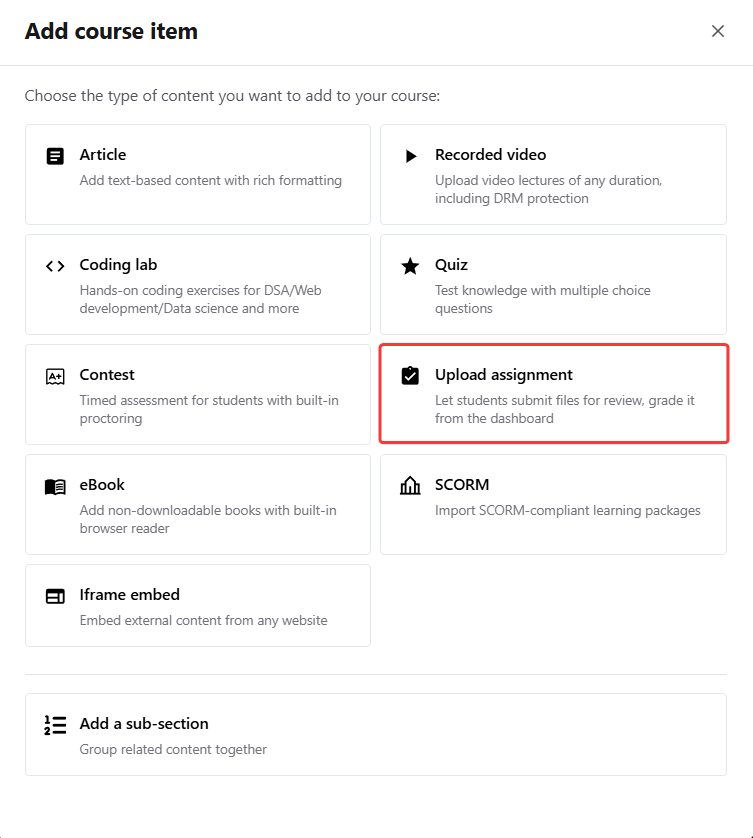
Find the section where you want to add the assignment and click Add in this section.

From the list of available content types, select Upload assignment.

3
Edit assignment details
Once the assignment block appears, click the three dots (⋮) next to it and select Edit.
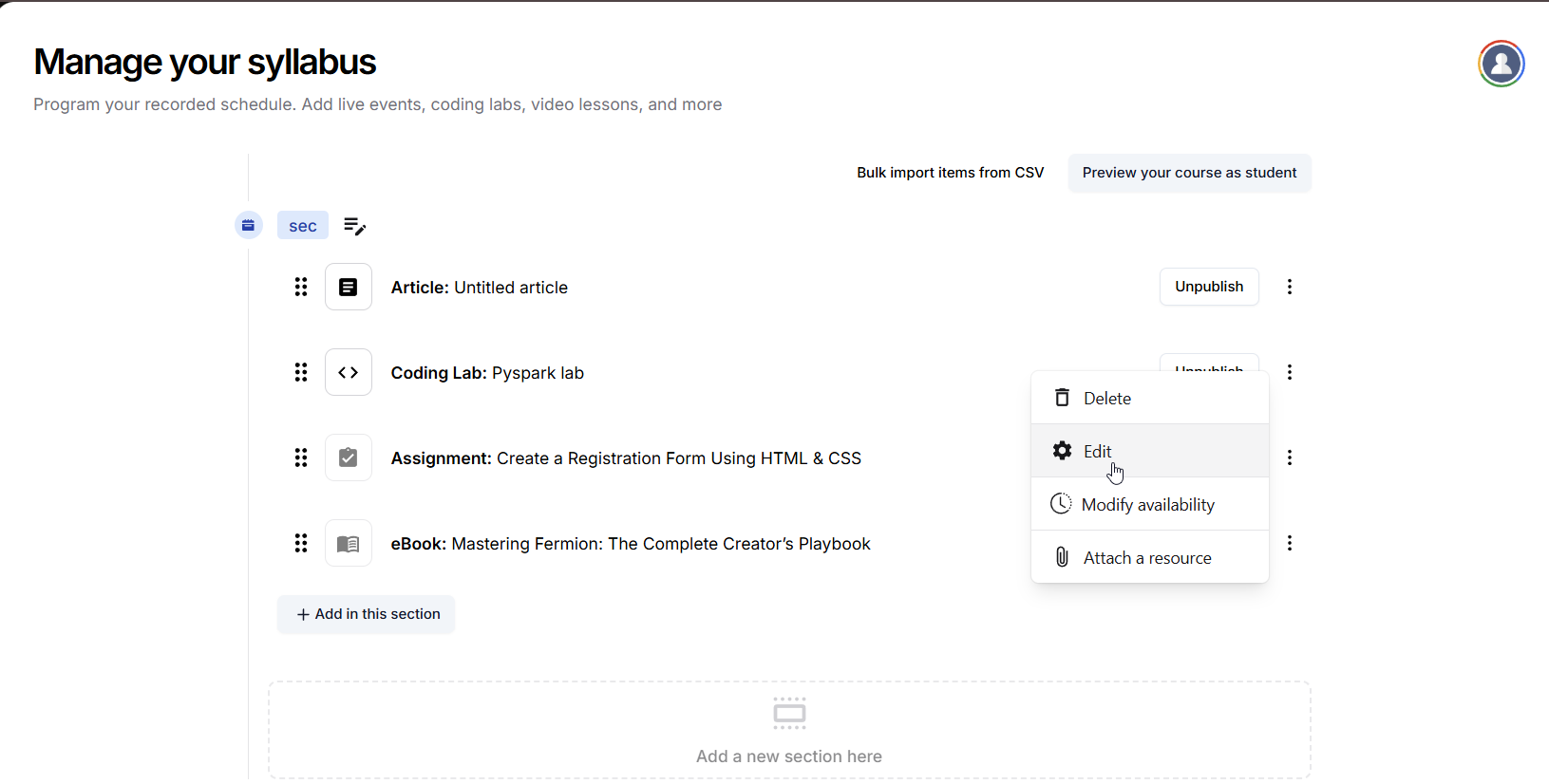

4
Add assignment title and description
Now you can:
- Add a Title for your assignment
- Write a Description (rich text supported) for your assignment. You can include formatted text, links, and images.
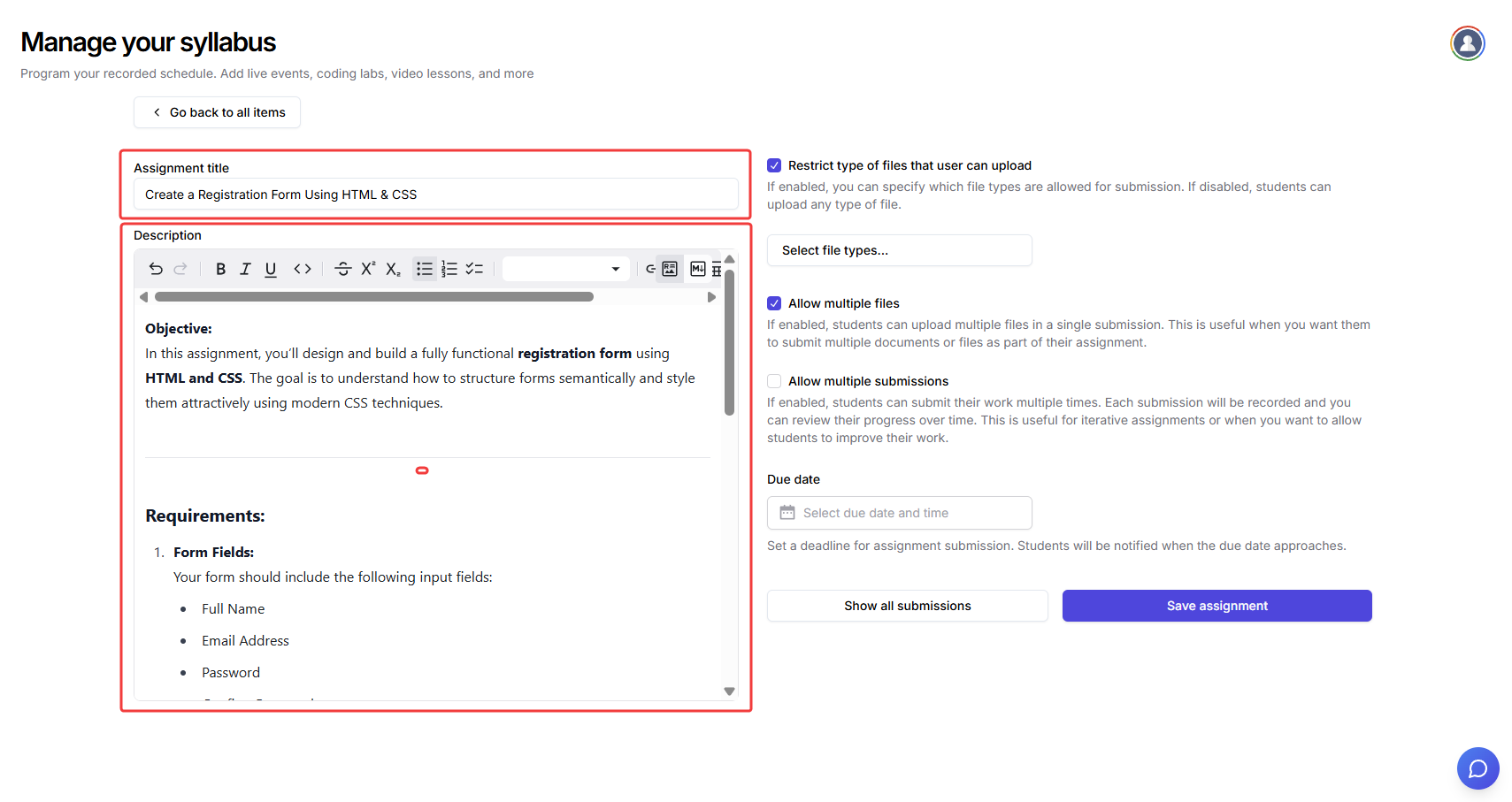
5
Configure assignment options
You can configure the following options while setting up assignments
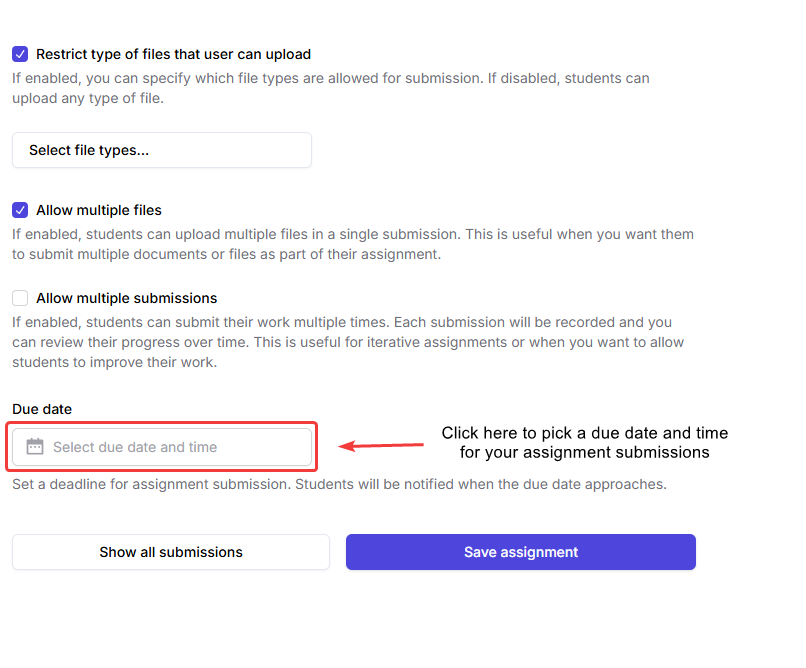
Restrict type of files that users can upload
Restrict type of files that users can upload
If enabled, you can specify which file types are allowed for submission.
If disabled, students can upload any type of file.Supported file types:
If disabled, students can upload any type of file.Supported file types:
- ZIP Archive (
.zip) - RAR Archive (
.rar) - PDF Document (
.pdf) - Word Document (
.docx,.doc) - Text File (
.txt) - Markdown File (
.md) - Excel Spreadsheet (
.xlsx,.xls) - CSV File (
.csv) - JPEG Image (
.jpg,.jpeg) - PNG Image (
.png) - GIF Image (
.gif) - Python Script (
.py) - JavaScript File (
.js) - TypeScript File (
.ts) - JSON File (
.json) - MP3 Audio (
.mp3) - MP4 Video (
.mp4)
Allow multiple files
Allow multiple files
If enabled, students can upload multiple files in a single submission.
This is useful when assignments require multiple documents, assets, or project files.
This is useful when assignments require multiple documents, assets, or project files.
Allow multiple submissions
Allow multiple submissions
If enabled, students can submit their work multiple times.
Each submission will be recorded separately, allowing you to review their progress over time or assess iterative improvements.
Each submission will be recorded separately, allowing you to review their progress over time or assess iterative improvements.

6
Set due date and time
Click on Select due date & time to set a deadline for the assignment.
Once selected, learners will see the due date clearly on their assignments
Once selected, learners will see the due date clearly on their assignments
7
Save and review submissions
After configuring all settings, click Save assignment.
Your assignment will now appear in the course syllabus.To view and manage the submissions, click the Show All Submissions button
Your assignment will now appear in the course syllabus.To view and manage the submissions, click the Show All Submissions button
Review assignment submissions
In the edit assignment section, you can view and manage all student submissions for your assignments by clicking the Show all submissions button. For each submission, you can see:- Student name and email
- Submission timestamp (when the assignment was submitted)
- Uploaded files: you can download any submitted file
- Grade status: whether the assignment is graded or not
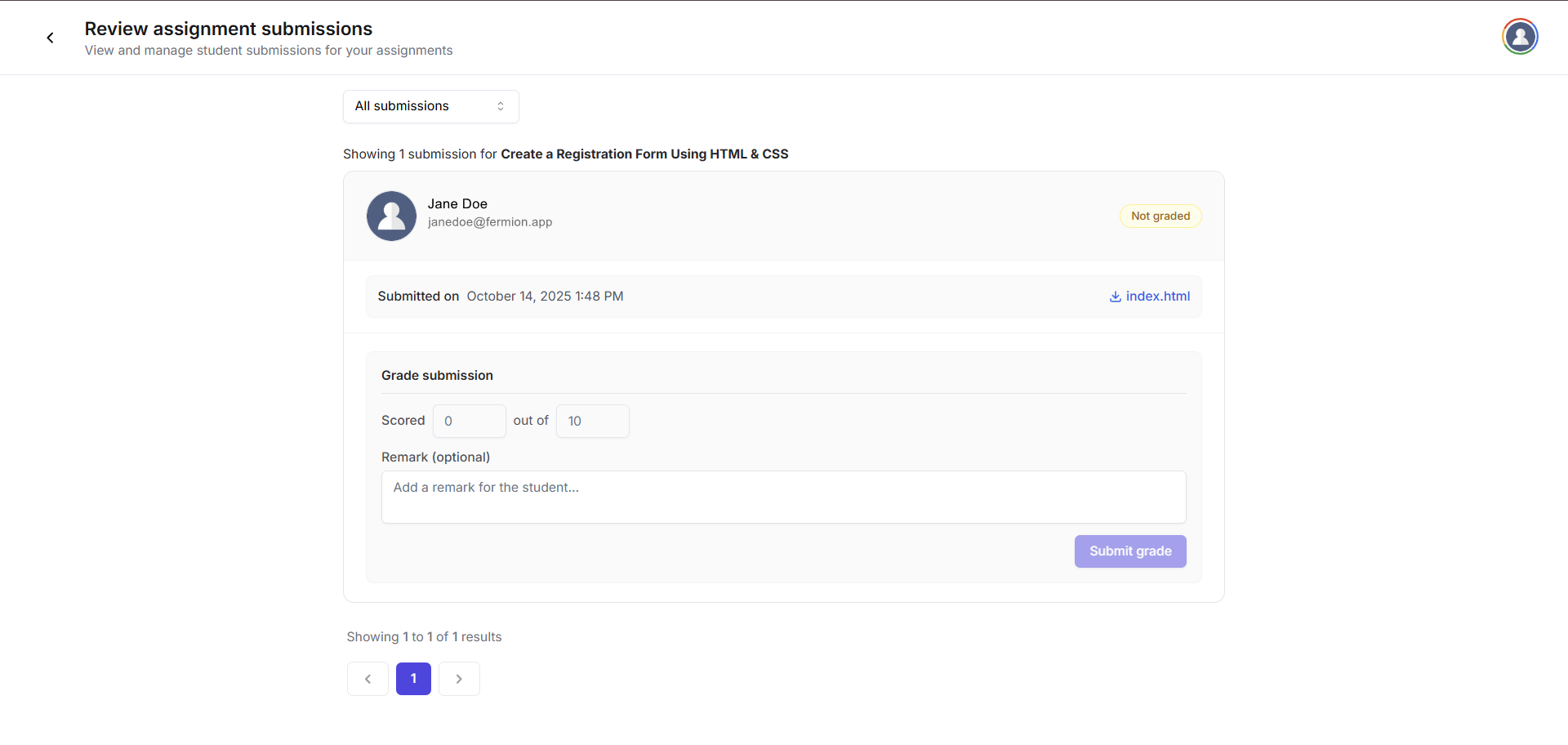 You can also grade submissions directly from this page, add remarks or feedback for the student, and track all submissions in a table format. This allows you to efficiently review, evaluate, and provide feedback to your learners.
You can also grade submissions directly from this page, add remarks or feedback for the student, and track all submissions in a table format. This allows you to efficiently review, evaluate, and provide feedback to your learners.
